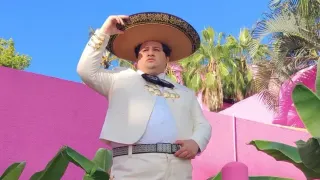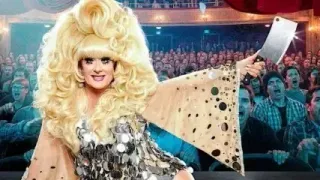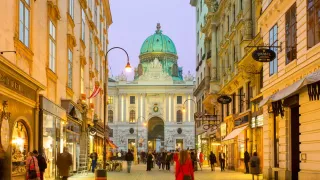
9 hours ago
Queer Kotor: Adriatic Allure and Hidden Rainbows in Montenegro’s Medieval Gem
READ TIME: 4 MIN.
The moment you step through Kotor’s ancient stone gates, it’s as if you’ve fallen into a queer fairytale—a place where the mountains hug the bay so tightly it feels conspiratorial, and the scent of Adriatic salt mingles with woodsmoke and espresso. The Old Town pulses with a low, magnetic hum: limestone alleys echo with laughter, the clang of cathedral bells, and the shuffle of locals (and the odd drag queen) out for a late-night stroll. At dusk, rainbows skitter atop the water, not just from the sunset but reflected in the subtle, proud smiles of LGBTQ+ locals who have carved out a space for themselves in this old-world wonder.
Let’s set expectations: Kotor is not Berlin, and you won’t find a block lined with rainbow flags. But what the city lacks in explicit queer venues, it makes up for in *inclusive* spaces and warm, knowing nods. The scene is intimate, authentic, and—once you tune in—joyfully undeniable.
- Letrika Caffe Bar: By day, it’s a chill café with vintage décor and a courtyard perfect for people-watching. By night, Letrika morphs into a pulsing den with DJ beats, smoke machines, and queer-friendly energy that spills into the alleys. It’s the closest thing to a queer club in town and a favorite among LGBTQ+ travelers and allies alike. Bring cash and your best dance moves—here, identities blend and everyone is welcome .
- Old Town Pub: The social heart of many backpacker crawls, Old Town Pub is where you’ll hear group karaoke, make new friends, and maybe find your next queer crush. The vibe is easygoing and the crowd eclectic—a microcosm of Kotor’s open spirit .
- Havana and Taraca Bars: Both are known for their inclusive attitude and are regularly recommended by LGBTQ+ travelers. Havana leans cozy and cosmopolitan; Taraca is famous for its sunset cocktails and local cuisine .
- Ploce Beach: Just outside town, this rocky stretch is Montenegro’s unofficial gay beach—where sunbathers trade stories, share rakija, and swim in turquoise serenity. It’s as much about connection as it is about sea and sun, with a reputation for openness and easy smiles .
- Annual Kotor Pride Parade: Each summer, the bay erupts in a swirl of rainbow flags, music, and unapologetic self-expression. While smaller than those in major European cities, Kotor’s pride parade is rich in spirit and draws visitors from across the Balkans. Expect live performances, local art, and fierce joy—a testament to the resilience and visibility of Montenegro’s LGBTQ+ community .
Kotor wears its history like a fabulous velvet robe—think Venetian palazzos, Romanesque churches, and fortress walls that have seen more than a millennium of love, war, and whispered secrets. The city’s LGBTQ+ journey, while quieter than in Western Europe, is written into its fabric through acts of quiet resistance and open-hearted hospitality.
Montenegro, once part of Yugoslavia, has navigated a complex relationship with queer rights. Though nationwide progress is slow, Kotor has emerged as a pocket of tolerance and hope. The city’s pride events, cultural festivals, and visible LGBTQ+ advocates are signals of change—offering both solidarity for locals and a safe harbor for travelers .
Local icons—like activist Dragana Tripković, who’s worked to make pride parades possible, and queer artists whose work adorns Old Town galleries—infuse the city with resilience and color. Kotor’s International Festival of Children’s Theatre and Kotor Carnival are also known for their inclusivity and gender-bending performances, blending tradition with subversion
Who better to share Kotor’s queer secrets than those who call it home? According to Luka, a nonbinary artist who splits time between Kotor and Budva, “The best nights start at Letrika and end watching the sunrise from the fortress steps. It’s not about big crowds—it’s about the friends you make along the way” . Local tour guides (such as those offered by Holiday Houseboys) specialize in LGBTQ+ perspectives, tailoring walks to hidden viewpoints, queer history, and local lore .
Don’t miss:
- Old Town Hostel Kotor: Known for its inclusive, social vibe—whether you’re solo or with a crew, you’ll find friendly faces and impromptu rainbow-themed nights .
- Sunset boat parties: While not exclusively queer, these gatherings are famously open-minded, offering a chance to meet LGBTQ+ locals and travelers as the bay glows gold .
- Artisan shops and pop-up galleries: Seek out queer-owned businesses within the walled city, where handmade jewelry and artwork tell stories of love in all its forms .
While Kotor is considered one of Montenegro’s most welcoming destinations, public displays of affection may still draw attention outside explicitly queer events or spaces. That said, most travelers report feeling safe and accepted—especially in tourist-centric spots and during pride festivities .
- English is widely spoken in the Old Town, and locals are accustomed to diversity among visitors.
- If you’re looking for LGBTQ+ travel support or a local guide, platforms like Misterb&b and Holiday Houseboys offer direct connections to queer and queer-friendly hosts and guides .
For transgender travelers and those with less visible identities, discretion is advised in more rural areas or outside the main tourist zones, but within Kotor’s walls, you’ll find an atmosphere of respect and curiosity rather than judgment .
As night falls and the bay shimmers under a moonlit sky, Kotor reveals its true allure: a city that honors its past but dances boldly into the future, where every stone alley and sea breeze whispers, “You belong.” It’s not the size of the scene, but the depth of the welcome that makes Kotor unforgettable—a safe harbor for queer souls seeking beauty, kinship, and a touch of Adriatic magic.






